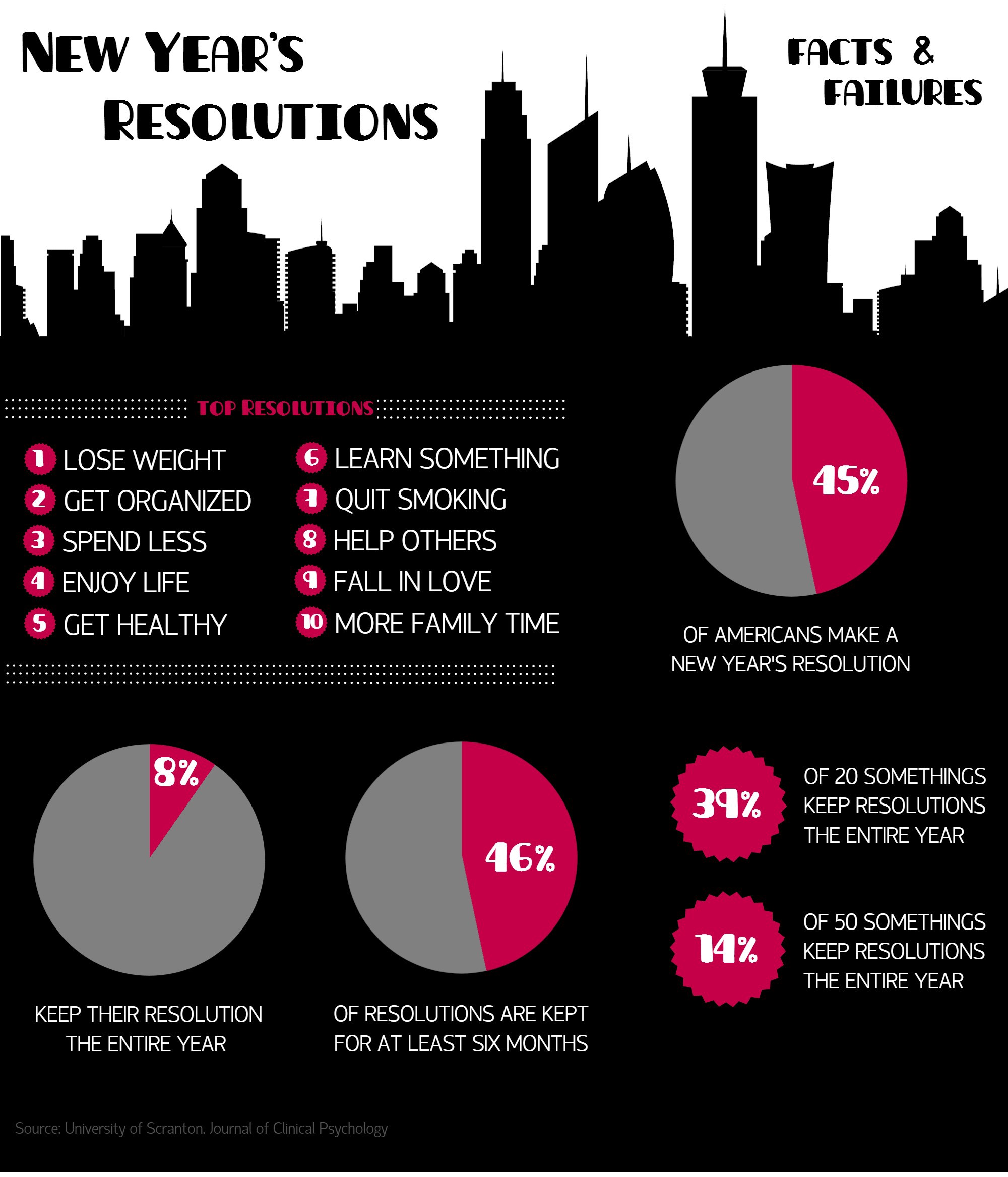The Project Manager’s Guide to Actually Accomplishing Your New Year’s Resolutions

As 2019 came to a merciful end, I, like many of you, started both reflecting on 2019 and looking ahead into 2020. I went into last year riding the wave of a wonderful year of personal growth, so my 2019 resolutions revolved around carrying that momentum into the coming year. My resolutions were something like “learn to sew,” “strengthen my friendships” and “keep self-reflecting and improving.”
As a project manager, setting and achieving goals is literally how I make my living, so I figured I had this in the bag. I rang in 2019 with high expectations that I was going into my best year ever. Oh, what a fool I was!
My cat was diagnosed with a chronic disease by March, and that was the start of a massive snowball of awful that turned 2019 into my Worst Year Ever. It sent all my resolutions flying out the window. Rather than strengthen my friendships, I canceled on them. Did I use that time to self-reflect and improve? No, but I did cry a lot! And LOL, what’s sewing?
All this is to say, I was feeling pretty pessimistic about this year. What if the snowball of awful I got caught in throughout 2019 wasn’t done rolling yet? Planning felt meaningless — after all, I could get hit by a bus tomorrow and die.
But then I thought, fuck that. If I want 2020 to be my year, I need to set myself up for success. I need to make those resolutions! Except resolutions NEVER WORK, even in years your cat doesn’t throw a giant wrench in everything. So what’s a sad, jaded girl to do when she’s trying to follow up her Worst Year Ever with her Best Year Ever?
This year I didn’t make resolutions — I made goals. S.M.A.R.T. goals. And you can too.
Why Resolutions Fail
Every year around this time we start seeing articles and blogs — like this one — about how resolutions never work and “new year new me” is a sham invented to sell T-shirts on Etsy (or something). And yet, a whopping 45% of Americans still set resolutions every year. Of those 45%, only 8% actually keep them the entire year. EIGHT PERCENT! More people gave CATS a fresh tomato last year than kept their resolutions. What? And more importantly, why?
One of the main reasons we suck at keeping resolutions is that we suck at making resolutions.
First, we make resolutions that are way too vague. You want to read more, eh? More books? More Instagram captions? More drink menus at bars? Maybe you’ve decided your business needs to be more innovative. In your product? In your marketing? Are you going to make an open floor plan?
We also tend to set resolutions that are too far out of reach. You want to run a marathon this year but currently can’t run down the block? You’re gonna get hurt! You want to increase sales by 300% with no additional marketing budget? Buddy, have I got news for you.
There are over 9 million hits on Google for “why New Year’s resolutions fail,” so if you want to learn more about why you’re not going to keep your resolution 92% of people who set resolutions fail, Google on! Or, you could take my word for it and read on to learn how you can achieve your goals in 2020.

Source: University of Scranton, Journal of Clinical Psychology
SMARTer Goal Setting
Knowing resolutions suck, I decided that this year I was going to set goals instead. Real, tangible goals, not “lose weight” or “read more” or “actually take my car to the car wash at least once this year the rain is not a free car wash, Haley.” Instead, my goals look more like “pay off all my vet bills by June” and “sew an article of clothing I can wear in public by March.”
What makes these goals better than the resolutions? These goals are SMART.
We’ve used the SMART system internally here at Nebo, and I found right away that these goals were much more likely to be reached. So when it came time for my personal goals, I knew I had a successful framework to follow.
A SMART goal has five simple, but crucial, components that set you up for success much better than a new planner. These goals are Specific, Measurable, Achievable, Relevant and Time-Bound.
Specific
Unlike your vague resolution, a SMART goal is very specific and leaves no room for interpretation. If you’re trying to set a goal, you’ve identified some sort of gap you want to fix, so take some time to think of exactly what you want to achieve to fill it. You can’t really get too detailed here, so be thorough!
Measurable
Your goal needs to be something you can measure, which is why goals like “read more” or “be more innovative” don’t work. There’s no metric to hold yourself to, and therefore this goal will fail. A better version of these goals would be read one book a month or test three new innovative marketing tactics. You need something you can check in on and say, “Did I reach my goal this month? Am I on track?” The more you can check in with yourself and track your progress, the more likely you are to succeed.
Achievable
Your goal MUST be something you can actually do or you are, of course, guaranteed to fail. I’m not going to do an individual sail around the world this year because I don’t know how to sail and also get seasick on docks.
That’s an obvious example, but sometimes it’s not as obvious when a goal isn’t achievable. If I decided I wanted to lose 20 pounds, for example — it’s specific! It’s measurable! It sounds achievable! But it is way more weight than I have ever lost in a year, and I run five times a week. I could make major changes and lose some weight for sure, but twenty pounds is a lot, and I’d get discouraged and give up long before I was able to achieve that. Now, don’t set the bar too low — you have to work to create change, after all — but setting the bar too high will set you up for failure.
Relevant
Make sure you’ve thought about why you want to achieve a given goal. Don’t set a goal just for the sake of setting a goal. Set a goal that serves some bigger purpose, or you’ll never keep it. Why spend the time and energy?
This why will be your motivation when you inevitably feel discouraged, or when you’ve forgotten why you’re getting up at 5 a.m. to go to the gym, or whatever part of your goal kinda sucks. Your goal is meant to benefit you in some way, so make sure you know what you’re trying to get out of it. Write it down so you don’t forget it.
Time-Bound
Humans are natural procrastinators (or maybe that’s just me), and it’s even harder to start doing something when there’s no deadline for you to make sure you meet. When your goal is simply to “lose weight,” you keep saying, “Oh but I have all year, I can eat all the free donuts at work today.” Suddenly it’s November, and you have no idea where the year went, but no, you definitely did NOT do that thing you planned. 🤷
Set yourself a deadline (and even occasional check-in milestones) so you have something shorter-term to aim for rather than letting it drag on for forever. I want to pay off my vet bills by June and sew wearable clothes by March, so come those months I know I will need to check in with myself — did I do it? If not, how far off am I, and what’s a more realistic timeline based on where I am? Otherwise, even with all these other SMART components in place, I know my sewing machine will sit in its box all year untouched, and my credit card will continue racking up interest it doesn’t need to.
Do your resolutions have these criteria? If not, it’s time to pull out a notebook and think these through. Your resolution doesn’t have to suck — just make it a SMART goal instead.
Make a Plan
So you’ve set yourself some SMART goals for 2020. Congratulations! You’ve taken a huge step. But, as they say, a goal without a plan is just a wish, so there’s another step you have to take if you want to achieve your goals: make a plan.
This can often feel like the hardest part, but it doesn’t have to be. As a project manager, the first thing I do when the map from A to B is a whole lot of ??????? is break it down into smaller parts. Do you need to create a weekly workout schedule? A budget? Do you need to learn how to read a garment pattern before you can use one?
Figure out what your steps are and what your obstacles are, and start building a plan from there. Set timelines for each of these steps as well, so you know you’re on track for your larger goal and timeline.
It’s important to be rigid when you can, but remember to have flexibility when it’s needed. Maybe you dive in and realize you’re actually in way over your head, or maybe you’re further along than you thought and need to rethink. Maybe there are steps you didn’t realize you’d need to take when you made your plan, and now you have to make more time for those. It’s OK if your timeline changes, but just make sure you don’t let it kill your motivation.
Sometimes, like I learned in 2019, life happens and turns your world upside down, and your goal just isn’t a priority anymore. Don’t kill yourself trying to make something happen if something more important takes precedence. My goals lost their urgency when my cat got sick, and I’m glad now that I spent the extra time with her that I did, because it’s the last time I got.
As 2019 came to an end, I had a whole lot of pessimism about resolutions, but a huge motivation to set myself up for a great 2020. I had a good, long talk with myself about what I want out of 2020 and the work I need to do, and set a few thorough goals to help get me there. I followed the SMART guidelines to ensure my goals are tangible and do-able, and made plans to reach them. I have milestones and check-in points and even plans to keep planning once I’ve hit them.
I don’t know exactly what’s coming for me this year, but I rang in the new year with a whole lot of optimism that, come this time next year, I’ll have reached my goals and then some.
Comments
Add A Comment